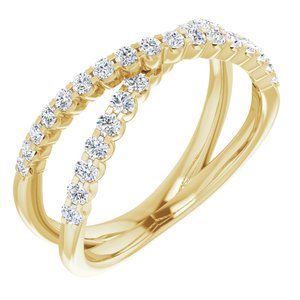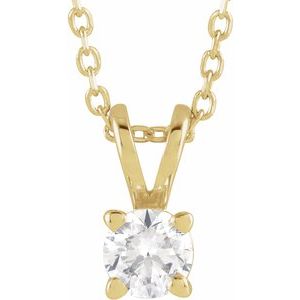The Brilliant Trio: Exploring the History, Beauty, and Ethics of Emeralds, Sapphires, and Rubies
Introduction
Welcome to Promise Jewelry’s comprehensive guide to the fascinating world of emeralds, sapphires, and rubies. These precious gemstones have captivated hearts and minds for centuries with their vibrant colors, rich histories, and timeless allure. At Promise Jewelry, we are committed to offering ethically sourced gemstones, ensuring that every piece you wear is not only beautiful but also responsibly obtained. Join us as we explore the history, characteristics, and ethical sourcing of these magnificent gems.
Section 1: Emeralds
History and Origins Emeralds have been cherished since ancient times, with their origins tracing back to mines in Egypt and South America. Cleopatra, one of the most famous lovers of emeralds, often wore and gifted these green gems, associating them with her own image and the divine. The Incas and Aztecs of South America also valued emeralds, using them in religious ceremonies and as symbols of wealth and power.
Characteristics and Quality Emeralds are renowned for their deep green color, caused by traces of chromium and vanadium. The most valuable emeralds exhibit a vibrant, even green with high saturation and minimal secondary hues. Emeralds are a type of beryl, and their unique green color is unlike any other gemstone. However, emeralds are also known for their inclusions, often referred to as "jardin" (French for "garden"), which are considered part of the stone's character rather than flaws.
When assessing the quality of an emerald, four main factors are considered:
- Color: The most prized emeralds have a rich, vivid green color with uniformity throughout the stone.
- Clarity: While inclusions are common, the fewer and less visible they are, the higher the emerald's value.
- Cut: A well-cut emerald maximizes the stone's color and brilliance, often using step cuts like the classic emerald cut.
- Carat Weight: Larger emeralds are rarer and more valuable, but quality should not be sacrificed for size.
Ethical Sourcing At Promise Jewelry, our emeralds are sourced from responsible mines in Colombia, Zambia, and Brazil. We work closely with suppliers to ensure that our emeralds are mined in a manner that respects both the environment and the communities involved.
- Colombian Emeralds: Known for their exceptional quality and vibrant green color, Colombian emeralds are highly sought after. Our suppliers in Colombia adhere to strict environmental and ethical standards, ensuring that their mining practices are sustainable.
- Zambian Emeralds: Zambian emeralds are valued for their deep green color and excellent clarity. The mines in Zambia are committed to fair labor practices and contribute to local community development projects.
- Brazilian Emeralds: Brazil produces a variety of emeralds with unique color characteristics. Our Brazilian emeralds come from mines that prioritize environmental conservation and the well-being of their workers.
By choosing Promise Jewelry, you are not only acquiring a beautiful gemstone but also supporting ethical and sustainable practices in the gemstone industry.
Notable Emeralds and Jewelry Pieces
- The Hooker Emerald: This remarkable 75.47-carat emerald, now housed in the Smithsonian Institution, was once part of the Turkish Imperial Treasury.
- The Mogul Mughal Emerald: Weighing 217.80 carats, this emerald is carved with Islamic prayers and floral motifs, representing the pinnacle of Mughal craftsmanship.
- The Elizabeth Taylor Emerald Necklace: A gift from Richard Burton, this necklace features a stunning Colombian emerald and diamonds, showcasing Taylor's love for exquisite jewelry.
Section 2: Sapphires
History and Origins Sapphires have a storied history, often associated with royalty and romance. These magnificent gemstones have been treasured for thousands of years, with some of the earliest sapphires mined in Sri Lanka over 2,000 years ago. In medieval Europe, clergy wore sapphires to symbolize Heaven, while commoners believed the gemstone protected them from envy and harm. Today, sapphires are mined in various parts of the world, including Sri Lanka, Myanmar, Madagascar, and Australia, each region producing sapphires with distinct characteristics.
Characteristics and Quality Sapphires are best known for their stunning blue hues, but they can also be found in a range of colors, including pink, yellow, green, and even colorless. Blue sapphires, particularly those with a deep, velvety blue color, are the most sought after.
When evaluating sapphires, the following factors are key:
- Color: The most prized sapphires exhibit a vivid, intense blue with no zoning or color banding. Other valuable sapphire colors include "padparadscha," a rare pink-orange hue.
- Clarity: High-quality sapphires are generally free from visible inclusions, although some inclusions are acceptable if they do not detract from the stone’s beauty.
- Cut: A well-cut sapphire enhances its color and brilliance, often utilizing cuts like oval, round, and cushion to maximize the stone's natural beauty.
- Carat Weight: While larger sapphires are rarer and more valuable, the stone’s overall quality and color intensity are crucial in determining its worth.
Ethical Sourcing Our sapphires at Promise Jewelry are sourced from ethical mines in Sri Lanka and Madagascar. We prioritize transparency in our supply chain, ensuring that our sapphires are conflict-free and responsibly mined.
- Sri Lankan Sapphires: Sri Lanka, also known as Ceylon, is famous for producing some of the finest sapphires in the world, known for their bright, vibrant blues. Our Sri Lankan suppliers adhere to strict environmental and social standards, ensuring fair wages and safe working conditions for miners.
- Madagascar Sapphires: Madagascar is a significant source of high-quality sapphires with diverse color varieties. The mines in Madagascar follow ethical practices, including responsible land management and community development initiatives.
At Promise Jewelry, we are committed to offering sapphires that are not only beautiful but also ethically sourced. Our dedication to responsible sourcing ensures that every sapphire you purchase from us contributes to positive environmental and social impacts.
Notable Sapphires and Jewelry Pieces
- The Logan Sapphire: One of the largest faceted blue sapphires in the world, this 422.99-carat gem is on display at the Smithsonian Institution.
- The Star of India: This famous star sapphire, weighing 563.35 carats, is notable for its striking star pattern, caused by a phenomenon known as asterism.
- The Blue Belle of Asia: At 392.52 carats, this Ceylon sapphire is one of the most valuable sapphires ever sold at auction, known for its exceptional color and size.
- Princess Diana’s Engagement Ring: This iconic ring features a 12-carat oval blue sapphire surrounded by diamonds, now worn by Catherine, Duchess of Cambridge.
Section 3: Rubies
History and Origins Rubies, known as the "King of Gemstones," have been admired for their intense red color and rarity. Historically, rubies have been mined in Myanmar (formerly Burma) for centuries, and Burmese rubies are highly valued for their exceptional quality. The rich red color of rubies has made them symbols of passion, power, and protection in various cultures. Today, rubies are also found in countries like Thailand, Mozambique, and Sri Lanka, each producing rubies with unique characteristics.
Characteristics and Quality The most desirable rubies are those with a vivid red hue, often referred to as "pigeon blood" red. Rubies are a variety of the mineral corundum, the same mineral that forms sapphires. The presence of chromium gives rubies their red color, and their value is determined by several factors:
- Color: The most prized rubies display a pure, vibrant red with no secondary colors. The term "pigeon blood" is often used to describe the highest quality rubies with an intense, fiery red hue.
- Clarity: While inclusions are common in rubies, the best quality stones have minimal inclusions that do not affect their overall appearance. Inclusions in rubies are often referred to as "silk" and can add to the stone's character if they are not too prominent.
- Cut: A well-cut ruby maximizes its color and brilliance, with popular cuts including oval, cushion, and round shapes that enhance the stone's natural beauty.
- Carat Weight: Larger rubies are rare and highly valuable, but the stone’s overall quality and color are more important than size alone.
Ethical Sourcing Promise Jewelry’s rubies are ethically sourced from mines in Mozambique and Thailand. We ensure that our rubies are obtained through fair trade practices, benefiting the local communities and preserving the environment.
- Mozambican Rubies: Mozambique has emerged as a significant source of high-quality rubies in recent years. The mines in Mozambique follow strict ethical standards, ensuring that the mining practices are environmentally sustainable and socially responsible. Our suppliers in Mozambique are committed to fair labor practices and community development.
- Thai Rubies: Thailand has a long history of ruby mining and is known for producing rubies with rich red colors. The Thai mining industry adheres to ethical practices, focusing on environmental conservation and the welfare of workers. Our Thai rubies are sourced from suppliers who uphold these high standards.
At Promise Jewelry, we are dedicated to providing rubies that are not only stunning but also ethically sourced. By choosing our rubies, you are supporting responsible mining practices and contributing to the well-being of mining communities.
Notable Rubies and Jewelry Pieces
- The Sunrise Ruby: At 25.59 carats, this ruby is one of the most valuable colored gemstones ever sold, renowned for its exceptional color and clarity.
The Burmese Ruby Tiara: Commissioned by Queen Elizabeth II, this stunning tiara features a series of rubies and diamonds set in a beautiful floral design.
- The Liberty Bell Ruby: This 8,500-carat ruby is one of the largest mined rubies in the world, sculpted into a miniature version of the Liberty Bell.
- The Carmen Lúcia Ruby: A 23.1-carat Burmese ruby set in a platinum ring, this gem is known for its extraordinary color and clarity, displayed at the Smithsonian Institution.
Conclusion
The histories of emeralds, sapphires, and rubies are as rich and colorful as the stones themselves. From ancient civilizations to modern royalty, these gemstones have adorned some of the most notable jewelry pieces in history. At Promise Jewelry, we are proud to continue this legacy by offering ethically sourced gemstones that not only enhance your beauty but also carry forward a tradition of excellence and responsibility. By choosing our emeralds, sapphires, and rubies, you are not only adorning yourself with stunning jewelry but also supporting sustainable and responsible mining practices. Explore our collection today and find the perfect piece that resonates with your values and style.










